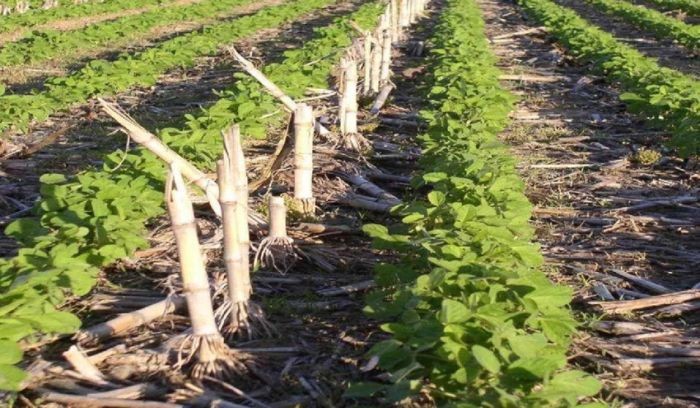
Hannah Krujia Asangla
ACTO – Agronomy
Zero tillage is the process where the crop seed are sown without prior land preparation. It is also called No Tillage or Nil Tillage. Zero tillage proves better for direct-seeded crop seeds viz., rice, maize, soybean, cotton, pigeonpea, mungbean, clusterbean, pearlmillet during kharif season and wheat, barley, chickpea, mustard and lentil during rabi season.
Objectives of zero tillage
• To reduce the cultivation cost
• To improve the organic matter content in the soil
• Reduction in soil erosion
• Increase in water use efficiency
• Reducing soil compaction
• Less fuel is required leading to less environmental pollution
• Weed problem is minimized. This may be due to the reason that weed seeds remained in deeper layer under zero tillage system in comparison to conventional system
Practices for management of zero tillage
1. Growing of cover crops - Cover crops perform a dual function as they protect the soil surface and improve the soil properties. Cover crops increase infiltration, create macropores (i.e., earthworm burrows), improve aggregate stability, and increase soil organic matter content and soil microbial biomass.
2. Crop rotation - Crop rotation is the practice of planting different crops sequentially on the same plot of land to improve soil health, optimize nutrients in the soil, and combat pest and weed pressure.
3. Implements - Heavy tillage equipments are not used for zero tillage as it can cause compaction of the soil. Implements used for zero tillage are zero seed cum fertilizer drill, rotary weeder, metal cutting blade mould board plough.
4. Management of crop residue - Crop residues can improve soil structure, increase organic matter content in the soil, reduce evaporation, and help fix CO2 in the soil. Good residue management practices on agricultural lands have many positive impacts on soil quality.
Benefits from zero tillage
• Enhance production and yield (4-10%)
• Lowers production costs (Rs. 2000-3000 /ha)
• Reduce CO2 emission
• Reduce fuel consumption
• Minimizes soil erosion
• Boosts soil quality
• Saves water
• Increases biological activity
• Reduces health hazard by avoiding crop residue burning
• Enhance water use efficiency
• Reduce the incidences of weeds such as Phalaris minor in wheat
Constraints in adoption of zero tillage
i. Lack of appropriate seeders especially for small farmers and medium scale farmers
ii. The wide spread use of crop residues for livestock feed and fuel
iii. Burning of crop residues
iv. Lack of knowledge about the potential of Zero Tillage
v. Skilled and scientific manpower.



